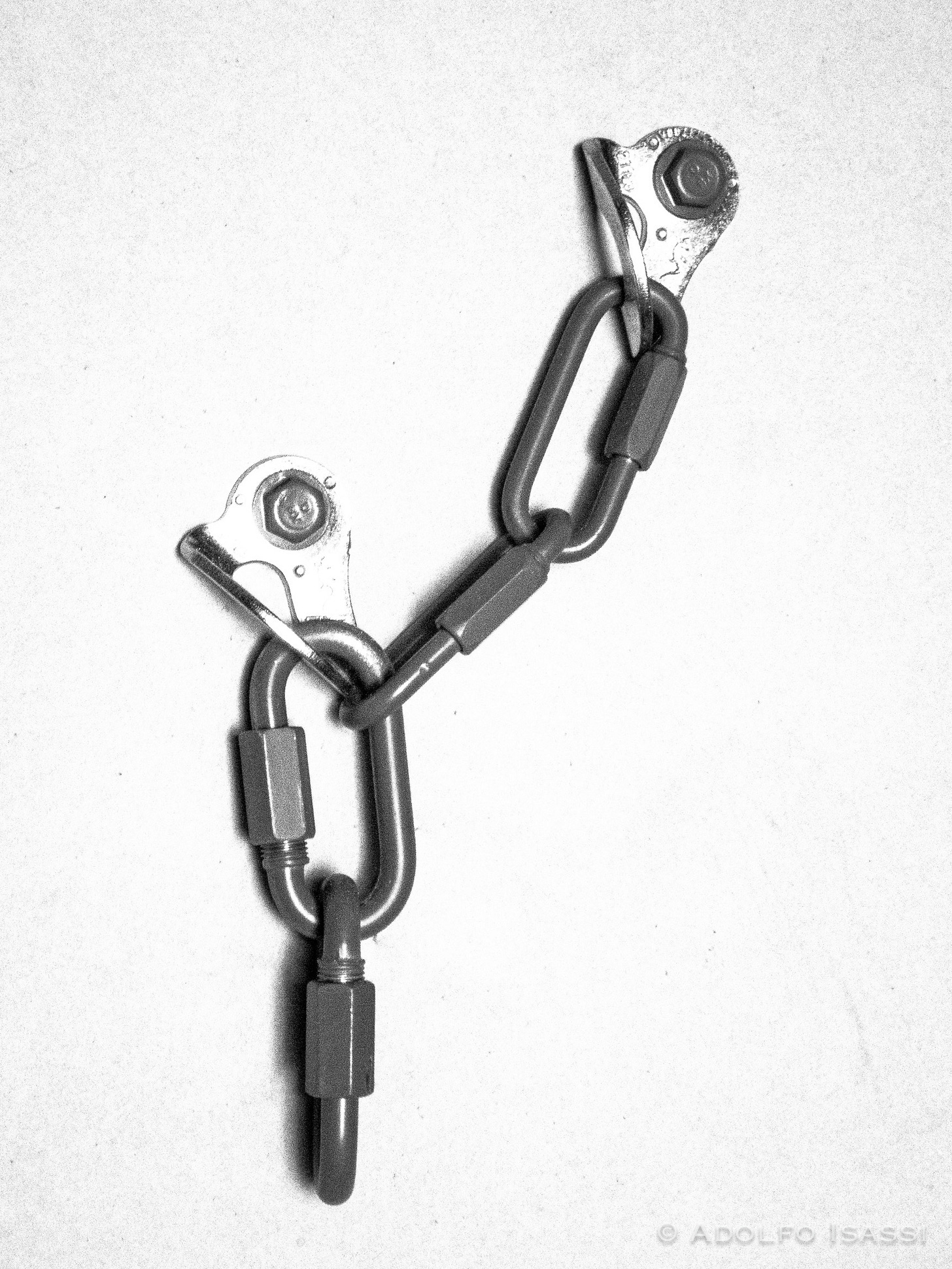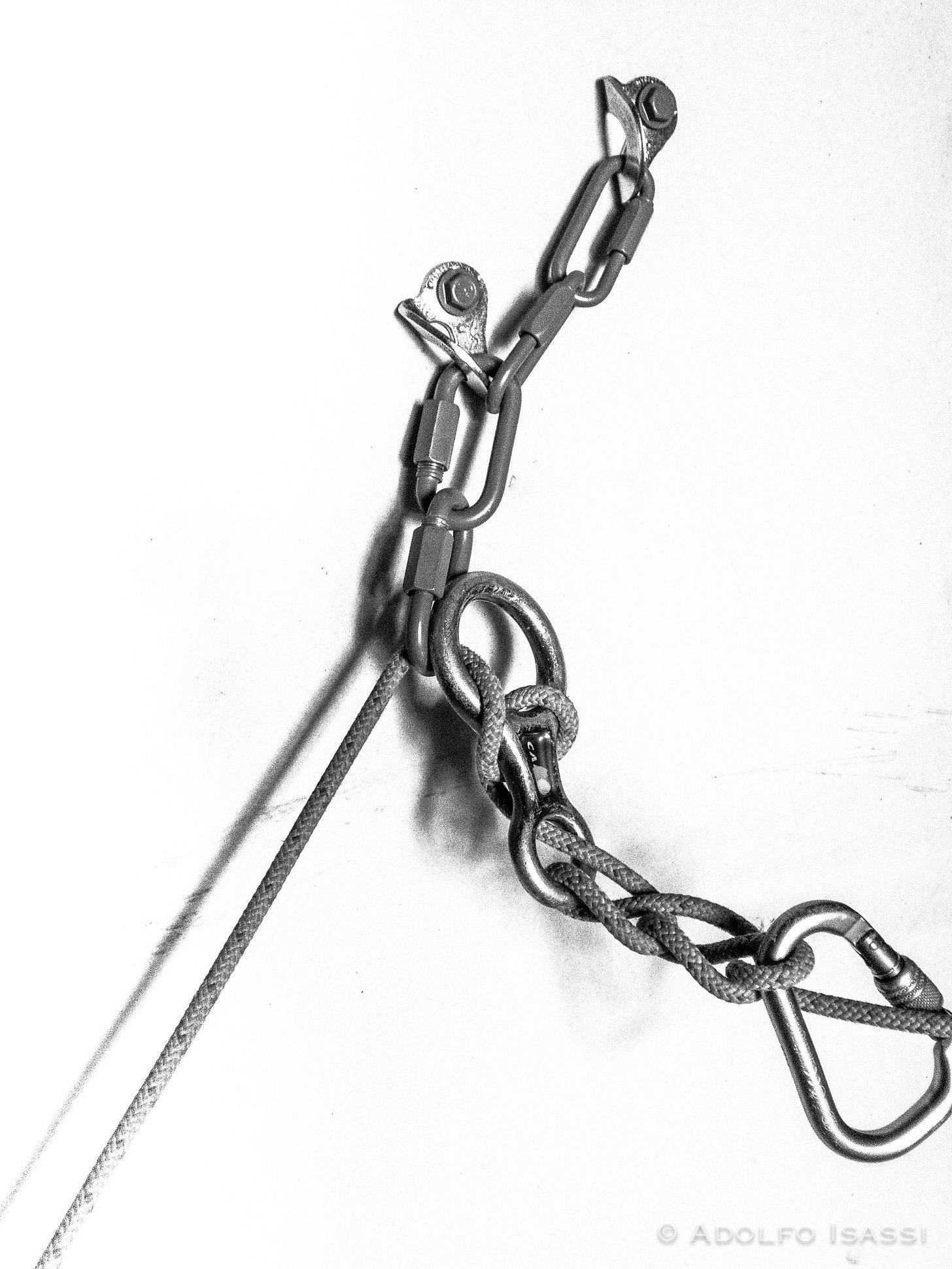In search for better anchor configurations
to stop canyoneering damage in the American Southwest
It seems that in the American SW, canyoneers go from rappelling from fallen logs, piles of rocks, bushes and twigs...to massive 50 kN glue-ins and chains that look like they belong in a sea port or industrial park. And ironically, the way canyoneers choose to locate both types of anchors, natural and artificial, cause canyon damage.
Part of the 3S Stewardship project is to match anchors with the level of traffic, competence and damage for canyoneering routes. Anchors that are:
Safe
Non damaging
Compact & Discrete
Upgradable & Sustainable
Functional
Intuitive
Safe
Although this is an obvious requirement, it is ironic to see, read, hear 'safety concerns' with some bolted installations, from communities willing to rappel from piles of rocks, and other marginal anchors.
Non Damaging
Anchor should be located in a way that results in a clean rope pull that does not damage the rock. Also, swinging hardware like chains or oversized master-points produce the same level of damage as rope grooves. Anchor locations should be above or out of flash flood current.
Compact & Discrete
Especially at canyon entrances and exits, where canyoneering anchors may be an eyesore for hikers or other types of visitors.
Upgradable & Sustainable
Bolting that results in a safe, functional, non damaging, discrete installation, is challenging. It is desirable to have the ability to correct any unforeseen considerations. Although glue-ins installations are more durable than mechanical installations in sandstone, glue-ins are a very commiting installation with dire consequences if location or any other aspect of the installation results in non ideal conditions. This project proposes an initial installation that is easily upgradable, or corrected if necessary leaving minimal impact. In other words, bolting a canyon in phases.
Functional
The rappeling station should be way more than a safe means to negotiate a vertical pitch. It should accommodate a station manager and their gear with options to clip in personal safety and gear independently from the load movement at the master point. It should also accommodate rescue loads and maneuvers.
Intuitive
This is probably one of the most challenging aspects. The lack of training and understanding of anchor configurations results in SW canyoneers wanting to put webbing on any anchor they encounter, or putting fiddle sticks on anything they encounter.
HARDWARE
USA is behind in the development and availability of canyoning specific hardware. For the most part, we are still relying on rock climbing hardware, and adapting it to canyoneering. Part of the decision process for hardware selection is limiting the selection to hardware that looks familiar to canyoneers. Unfortunately that may mean not using selections like ECH or Tablion which are very compact and discrete.
MISPLACED CONCERNS?
Anchor characteristics are an important part of canyoneering instruction: DEAR vs SERENE or EARNST. While Equalition and No Extension are important concepts to grasp for marginal or aging anchors, canyoneering benefits more from notions of Accessibility and Rope Pull. In recent years, I've seen an overdue effort to move to "Clean Rigging" (Thanks Rich Carlson), but these efforts seem to still be hindered by notions of redundancy, no extension, edge-proximity and overlapping cones, that result in either:
Too close 2 point anchors with overlapping cones
Too far 2 point anchors with long chains
WELL PLACED CONCERNS
As shown in the series of posts regarding canyon damage, at this point, the main culprit is badly placed bolts. Most likely by people that were really sure about what they were doing. So do not be one of these types. These stewardship series are not a call for bolting, to the contrary, they are a call to stop bad bolting. Do not go from fiddle sticks to experimenting with bolting. The current phase of the 3S Stewardship project is focused on correcting current stations that are causing damage, not creating new ones.
Related posts:
Vertical Anchors:
https://www.alpinesavvy.com/blog/vertical-anchors-101
DEAR
https://www.facebook.com/groups/instructionalcanyoneeringresource/posts/7847830295267110/
Shock load testing





